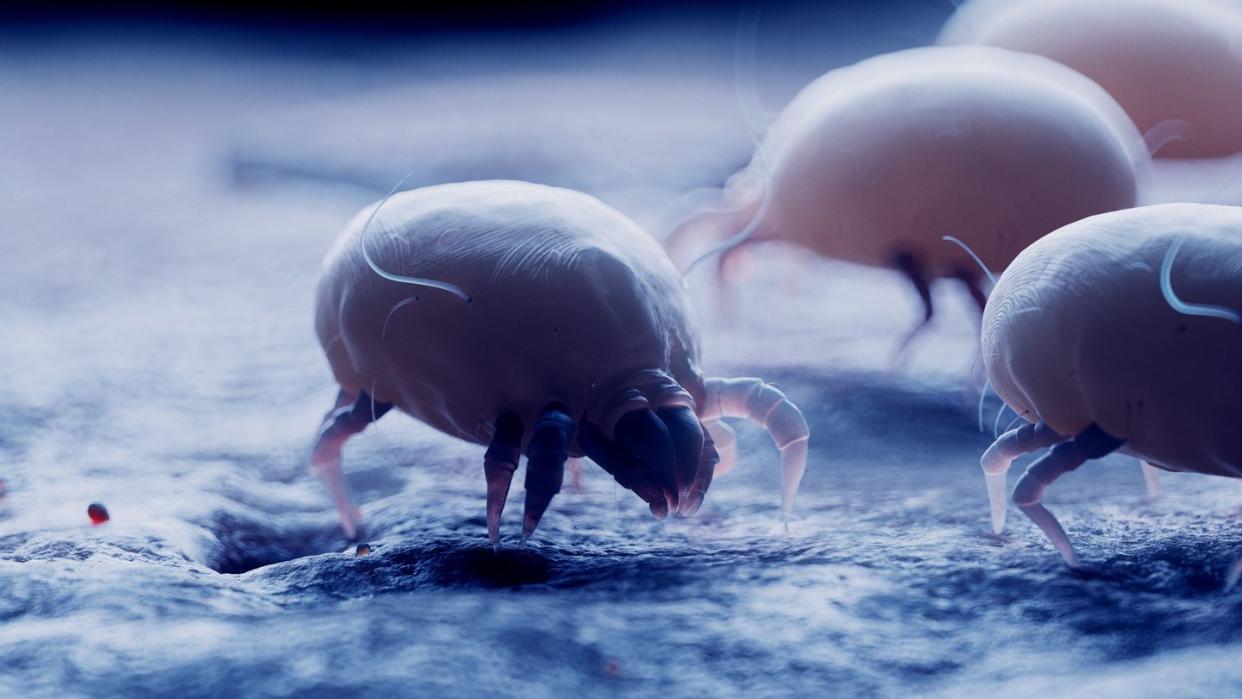Immunologists Want You to Know These Dust Mite Allergy Facts

Because microscopic dust mites are invisible to the naked eye, they seem like an elusive storybook creature that may or may not loom among our homes. But their presence quickly becomes known when they’re responsible for an unexplained allergic reaction—which brings us to the question: Do dust mites bite? Below, an immunologist and allergist explain everything you need to know.
Meet the Experts: Sharlene Llanes, M.D., an allergist and immunologist with AllerVie Health, Loxahatchee and James Faix, M.D., medical director of immunology at Quest Diagnostics.
Do dust mites bite?
“Dust mites are microscopic, insect-like creatures that are found in homes,” explains Sharlene Llanes, M.D., an allergist and immunologist with AllerVie Health, Loxahatchee. James Faix, M.D., medical director of immunology at Quest Diagnostics adds that they are found in house dust corralled in soft surfaces like rugs, sofas, bedding, and clothing where they live on a diet of shed human skin—keyword being shed, meaning they do not bite to feed. “They don’t bite, but they feed off the dead skin of humans and pets,” says Dr. Llanes. With that being said, contact with dust mites can cause uncomfortable allergic reactions.
Symptoms of a dust mite allergy
A dust mite allergy might “take on the appearance of insect bites,” or a skin rash, says Dr. Faix. It also can manifest as asthma or allergy-like upper respiratory symptoms. Here’s a comprehensive list of signs to watch for, per Dr. Faix and Dr. Llanes:
Nasal congestion
Sneezing
Runny nose
Itchy, red eyes
Itchy nose and throat
Sinus pressure
Wheezing
Cough
Difficulty breathing
Atopic dermatitis (rash)
Rarely, gastrointestinal distress after eating crabs or lobsters due to
cross-reactivity to dust mite antigens
How to treat a dust mite allergy
Treatment of a dust mite allergy depends on the symptoms—allergic rhinitis, or your typical seasonal allergy qualms, can be addressed with over-the-counter antihistamines and decongestants, Dr. Faix says. “Patients with moderate symptoms may require intranasal corticosteroids, and patients with severe symptoms who do not respond to these measures may be candidates for immunotherapy,” he adds, which gradually exposes a person to dust mites to get their immune system accustomed to them.
Asthma-like symptoms need treated on an individual basis by a primary care doctor or immunologist, says Dr. Faix, but may include steroids and/or an albuterol inhaler.
With all of that being said, both Dr. Faix and Dr. Llanes say that the most effective treatment of a dust mite allergy is eliminating the source of the allergen—meaning getting rid of carpets, drapes, stuffed toys, and other soft surfaces, generally cleaning and decluttering, and installing an air purifier with a HEPA filter.
How to get rid of dust mites
In short: “Cleanliness is key,” says Dr. Faix. That means vacuuming at least weekly and washing bedding and other upholstery in hot water regularly, he recommends. You can also minimize places for them to dwell by opting for hardwood floors and leather furniture. HEPA air purifiers and dehumidifiers can also help keep the air in your home dry and clean. To learn more, check out our guide on how to get rid of dust mites.
How to prevent dust mites
You can prevent excess dust mites by maintaining cleanliness, minimizing soft surfaces and textiles like stuffed toys and carpet, and using an air purifier with a HEPA filter, Dr. Llanes says. She also suggests keeping household humidity at 50% because dust mites thrive in warm, humid environments. Even if you check all of those boxes, though, Dr. Llanes stresses that it’s nearly impossible to completely eliminate dust mites from the home. “They are everywhere,” she says. “As long as there is a human in a home, dust mites are there to stay.”
You Might Also Like


